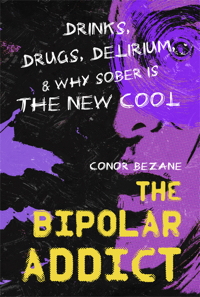Sweet and sultry. Smooth and melodic. Billie Holiday has an unmistakable singing voice. Impossible to replicate. She is truly one of the greatest jazz singers of all time, if not the greatest.
And she was also a hardcore alcoholic and addict. Her drink of choice was a Top and Bottom — half gin, half port wine.
There aren’t many anecdotes about Holiday’s drinking or drugging, but here’s one: According to Modern Drunkard magazine, Holiday was performing at a club in Manhattan one night in 1943, when she encountered two sailors from the South who were on leave in New York. They were surprised that a “darkie” could afford a mink coat. When Lady Day told them to take a hike, they stubbed out their cigarettes on her coat. She told them to meet her outside if they had any balls. Outside, Holiday proceeded to — gloves off — beat them unconscious. For as soft as her singing voice was, Billie Holiday was as badass as it gets.
Billie Holiday was born in Philadelphia on April 17, 1915. This year marks the 100th anniversary of her birth. Holiday was a rebel from the get-go. Growing up, she had a tough time of it. She frequently skipped school and was brought before juvenile court when she was nine years old. Thereafter she was sent to a Catholic reform school in Baltimore. She was raped by a neighbor at age 10.
“For years I used to dream about it and wake up hollering and screaming,” Holiday wrote about her time in reform school in her 1956 autobiography, Lady Sings the Blues. “It takes years to get over it.”
She moved with her mom to New York in 1928. There, she was raped again at age 14. She had begun prostituting herself the year before for a period of three years before she was arrested for solicitation.
After getting released from a women’s prison, Holiday landed her first paid singing gig at the Log Cabin Club in Harlem.
In 1933, she was discovered by John Hammond, the legendary record producer who was the first to see potential in Bob Dylan, Aretha Franklin, and Bruce Springsteen, among others.
Also around this time, she met Lester Young, a saxophonist who endowed her with the nickname Lady Day. Young and Holiday toured Europe together with Count Basie’s orchestra.
Throughout the ‘40s, Holiday enjoyed huge success, recording such hits as “God Bless the Child,” “Crazy He Calls Me,” and “Lover Man,” and starring opposite Louis Armstrong in the 1946 Hollywood film New Orleans.
However, her addiction was in full swing.
Busted for possession of narcotics in May 1947, she went to court and was sent to Alderson Federal Prison Camp in West Virginia. She was released early the following March because of good behavior.
March 27, 1948. Billie Holiday plays a sold-out Carnegie Hall in New York, signaling her comeback. In 1956, she would perform two sold-out shows at the concert hall.
However, Holiday was forbidden to perform anywhere that sold alcohol because her cabaret license had been revoked due to her jail sentence.
But in the end, it was alcohol that really did her in. Holiday died on July 17, 1959, of cirrhosis of the liver, a consequence of her heavy, alcoholic drinking.
Frank Sinatra famously said in Ebony magazine in 1958, “With few exceptions, every major pop singer in the U.S. during her generation has been touched in some way by her genius. It is Billie Holiday who was, and still remains, the greatest single musical influence on me. Lady Day is unquestionably the most important influence on American popular singing in the last twenty years.”
Holiday’s last album came out in 1958. The masterwork Lady in Satin featured a 40-piece orchestra arranged and conducted by Ray Ellis.
Her autobiography was made into a movie, Lady Sings the Blues, with Diana Ross playing the iconic singer. In 2000, she was inducted into the Rock and Roll Hall of Fame.








